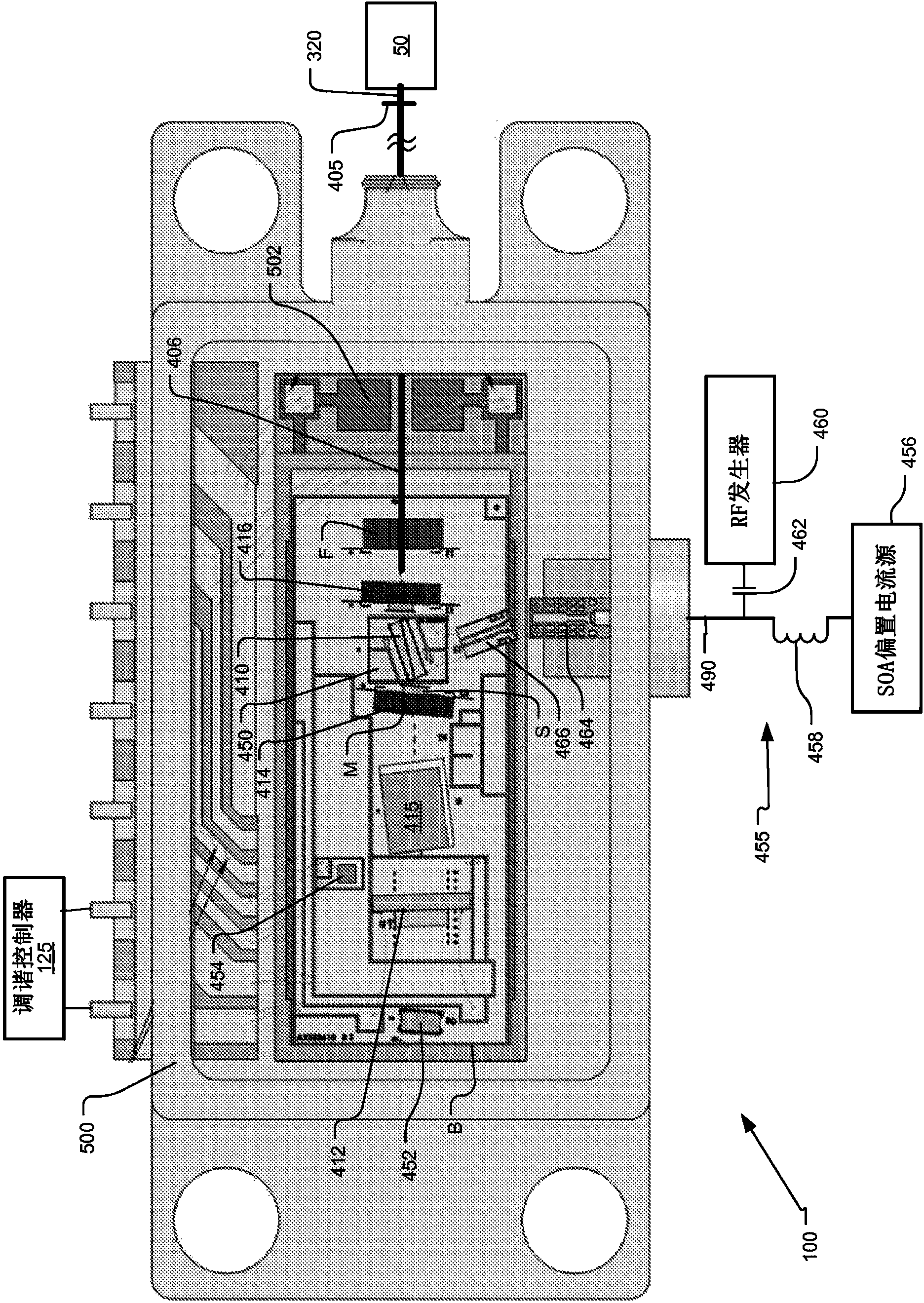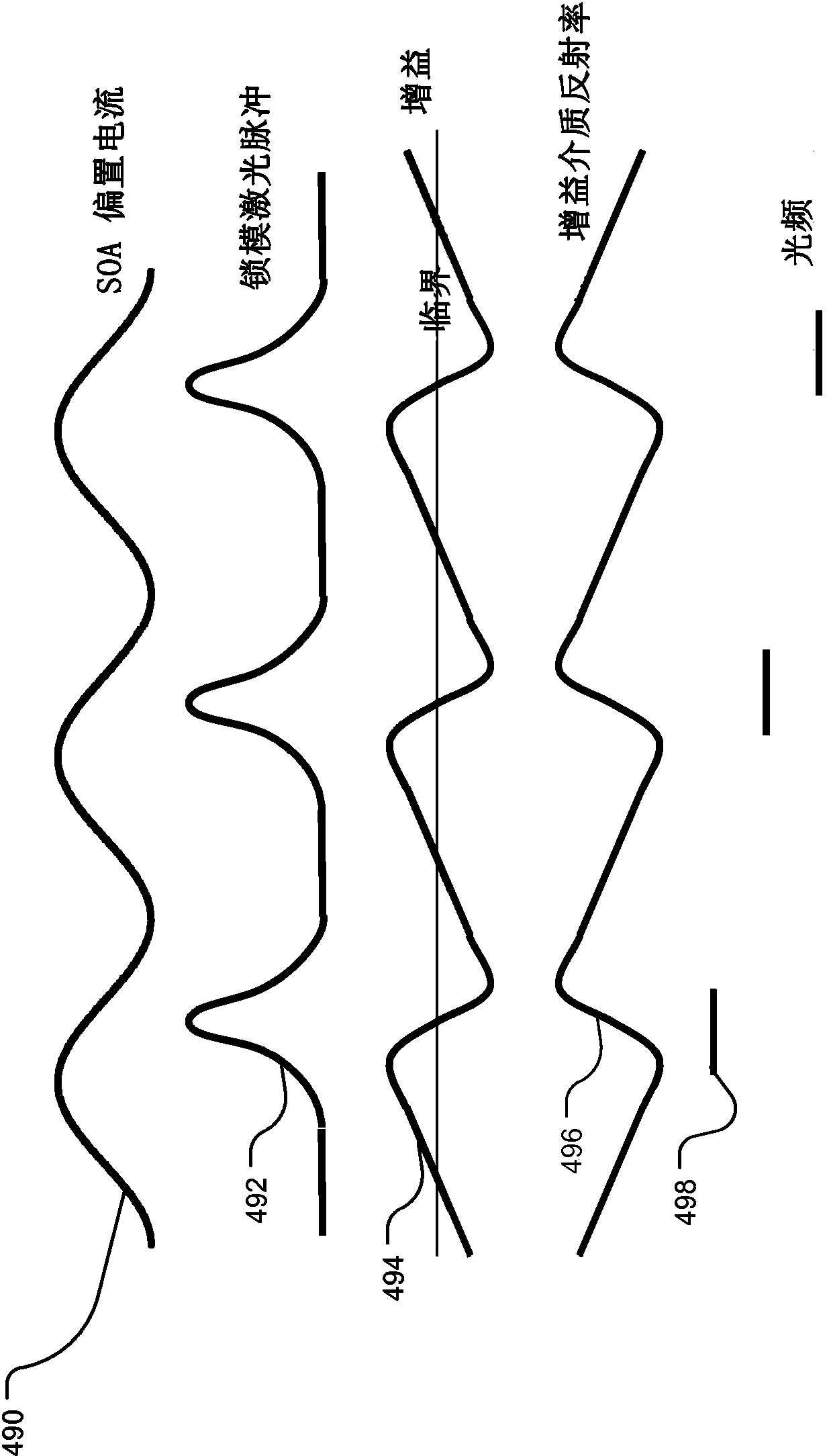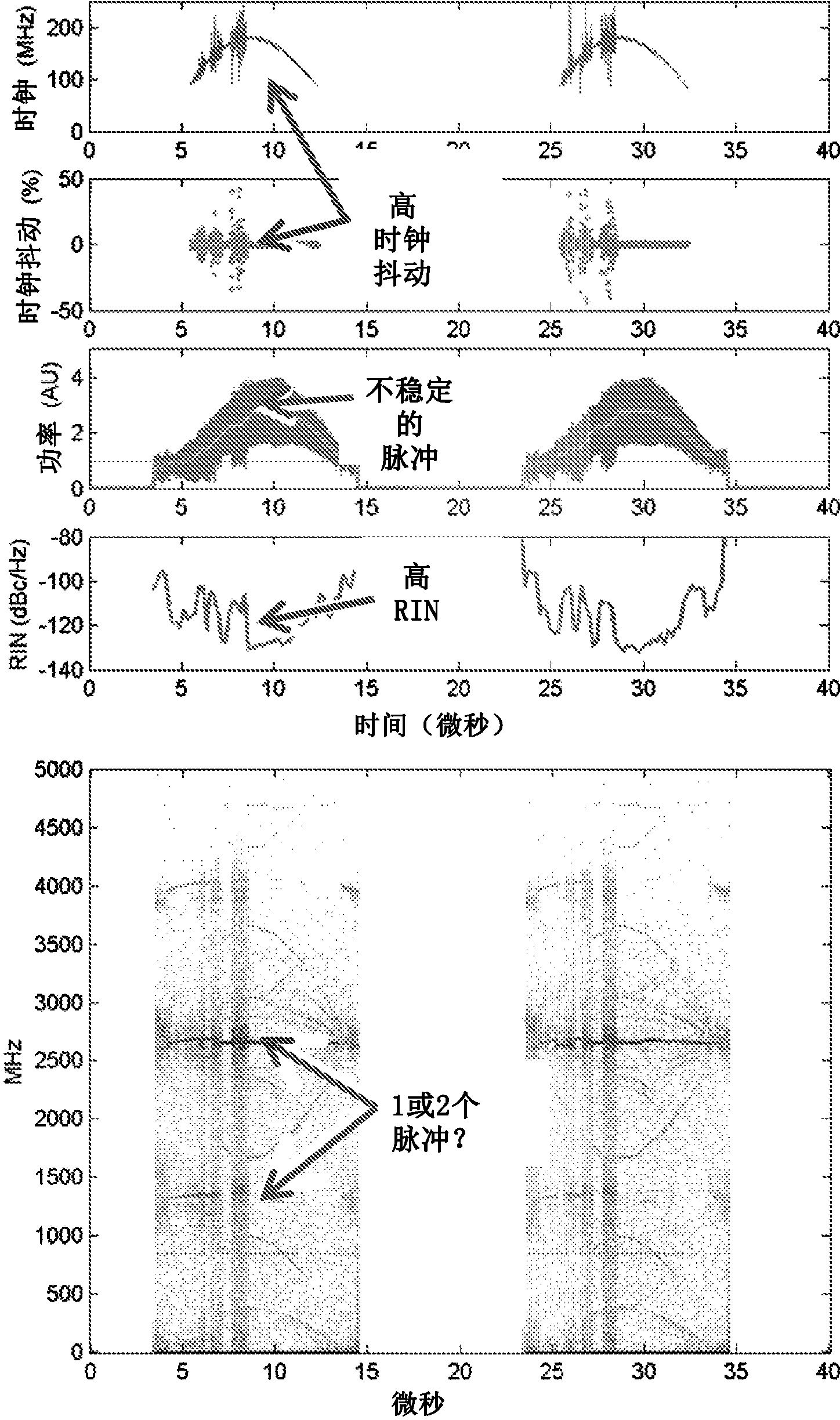Laser swept source with controlled mode locking for OCT medical imaging
A frequency-sweeping source and laser source technology, applied in lasers, medical science, semiconductor lasers, etc., can solve problems such as complexity and dispersion stability
- Summary
- Abstract
- Description
- Claims
- Application Information
AI Technical Summary
Problems solved by technology
Method used
Image
Examples
Embodiment Construction
[0046] figure 1 Shown is a mode-locked laser swept source 100 for optical coherence analysis constructed in accordance with the principles of the present invention. This embodiment controls or stabilizes the mode-locked operation by modulating the bias current to the intracavity gain block.
[0047] In the current embodiment, preferably the swept laser source 100 is a laser generally described in US Pat. No. 7,415,049 B1. It comprises a linear resonant cavity with a gain component 410 and a frequency tuning component 412 . In the example shown, the frequency tuning component is a Fabry-Perot filter which, in the implementation shown, defines one end of the resonant cavity.
[0048] Other resonator structures are used in other embodiments, such as ring resonators. Further other cavity tuning elements are used, such as gratings and thin film filters. These elements can also be located entirely inside the resonator, such as angle isolated Fabry-Perot tunable filters or gratin...
PUM
 Login to View More
Login to View More Abstract
Description
Claims
Application Information
 Login to View More
Login to View More - R&D
- Intellectual Property
- Life Sciences
- Materials
- Tech Scout
- Unparalleled Data Quality
- Higher Quality Content
- 60% Fewer Hallucinations
Browse by: Latest US Patents, China's latest patents, Technical Efficacy Thesaurus, Application Domain, Technology Topic, Popular Technical Reports.
© 2025 PatSnap. All rights reserved.Legal|Privacy policy|Modern Slavery Act Transparency Statement|Sitemap|About US| Contact US: help@patsnap.com



